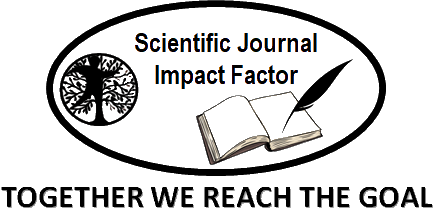The Effect of Government Regulations and Tax Policies on the Business Life of Shops in Suryakencana Market, Bogor
DOI:
https://doi.org/10.58812/wslhr.v1i04.324Keywords:
Government regulation, Tax policy, Business life, Suryakencana Market, Compliance costs, Small enterprisesAbstract
This research delves into the intricate relationship between government regulation, tax policy, and the business life of shops in Suryakencana Market, Bogor. Employing a mixed-methods approach that combines quantitative survey data, financial analysis, and qualitative insights from interviews, this study uncovers the multifaceted impact of government regulations and tax policies on businesses in the market. The results reveal that government regulations impose a significant regulatory burden and compliance costs on businesses, particularly affecting small enterprises. Industry-specific effects further highlight the need for tailored approaches to regulation. Additionally, tax policies influence business operations, with businesses often passing tax costs to consumers, and incentives promoting profitability. Cross-border taxation issues pose challenges to businesses engaged in international trade. These findings provide valuable insights for policymakers and stakeholders, emphasizing the importance of streamlining compliance procedures, supporting small businesses, and offering incentives for innovation and job creation to foster a conducive environment for business growth and sustainability in Suryakencana Market.
References
Kurniawan, A. Maulana, and Y. Iskandar, “The Effect of Technology Adaptation and Government Financial Support on Sustainable Performance of MSMEs during the COVID-19 Pandemic,” Cogent Bus. Manag., vol. 10, no. 1, p. 2177400, 2023, doi: https://doi.org/10.1080/23311975.2023.2177400.
Y. Iskandar, H. F. Ningrum, and B. M. B. Akbar, “PERAN FAKTOR INTERNAL DAN EKSTERNAL PADA KINERJA KEUANGAN PERUSAHAAN RITEL,” J. Ilm. MEA (Manajemen, Ekon. Akuntansi), vol. 4, no. 2, pp. 36–45, 2020.
T. P. Nugrahanti and A. S. Pratiwi, “The Remote Audit and Information Technology: The impact of Covid-19 Pandemics,” JABE (JOURNAL Account. Bus. Educ., vol. 8, no. 1, pp. 15–39, 2023.
T. P. Nugrahanti and A. S. Jahja, “Audit judgment performance: The effect of performance incentives, obedience pressures and ethical perceptions,” J. Environ. Account. Manag., vol. 6, no. 3, pp. 225–234, 2018.
J. C. Jamison, D. Bundy, D. T. Jamison, J. Spitz, and S. Verguet, “Comparing the impact on COVID‐19 mortality of self‐imposed behavior change and of government regulations across 13 countries,” Health Serv. Res., vol. 56, no. 5, pp. 874–884, 2021.
J. N. Ugwu, C. Nwani, K. I. Okere, and T. F. Agbanike, “Regulatory impediments to carbon emission mitigation in Sub-Saharan Africa: the impact of a hostile business environment and high tax burden,” Environ. Sci. Pollut. Res., vol. 29, no. 29, pp. 43845–43857, 2022.
A. Hansford and J. Hasseldine, “Tax compliance costs for small and medium sized enterprises: the case of the UK,” eJTR, vol. 10, p. 288, 2012.
D. Park, “Regulatory Capture, Fukushima Nuclear Disaster, And Overpriced Electricity In Philippines,” World Sci. B. Chapters, pp. 77–80, 2019.
B. J. Reis, “Right to Work Laws: Impacts on Labor Market, Union Organizing, and Social Equity,” Pol’y Persp., vol. 30, p. 75, 2023.
L. Jiang, Y. Wang, and J. Zhang, “Local-neighborhood effects of environmental regulations on green technology innovation in manufacturing: Green credit-based regulation,” Front. Environ. Sci., vol. 10, p. 1072180, 2022.
S. Henson and S. Jaffee, “Public and Private Food Safety Standards: Compliance Costs and Strategic Opportunities,” World Bank Institute, Washington, DC, 2007.
I. Bernik and K. Prislan, “Measuring information security performance with 10 by 10 model for holistic state evaluation,” PLoS One, vol. 11, no. 9, p. e0163050, 2016.
M. A. K. Harahap, F. Tanipu, A. Manuhutu, and S. Supriandi, “Relations between Architecture, Urban Planning, Environmental Engineering, and Sociology in Sustainable Urban Design in Indonesia (Literature Study),” J. Geosains West Sci., vol. 1, no. 02, pp. 77–88, 2023.
J. V. V. Mendonça and C. A. de Moraes Ramos Filho, “A natureza jurídica do incentivo fiscal referente à contribuição para o PIS e à COFINS na zona franca de Manaus The legal nature of the tax incentive regarding the contribution to PIS and COFINS in the Manaus free zone,” Brazilian J. Dev., vol. 8, no. 4, pp. 31802–31813, 2022.
L. Kawano and J. Slemrod, “How do corporate tax bases change when corporate tax rates change? With implications for the tax rate elasticity of corporate tax revenues,” Int. Tax Public Financ., vol. 23, no. 3, pp. 401–433, 2016.
R. J. Gordon, “Specification bias and corporate tax incidence,” Natl. Tax J., vol. 23, no. 4, pp. 373–378, 1970.
G. Abuselidze, “Optimality of tax policy on the basis of comparative analysis of income taxation,” Eur. J. Sustain. Dev., vol. 9, no. 1, pp. 272–293, 2020.
D. Debortoli, R. Nunes, and P. Yared, “Optimal fiscal policy without commitment: Revisiting Lucas-Stokey,” J. Polit. Econ., vol. 129, no. 5, pp. 1640–1665, 2021.
Downloads
Published
How to Cite
Issue
Section
License
Copyright (c) 2023 Ujang Badru Jaman , Arief Fahmi Lubis, Yana Priyana

This work is licensed under a Creative Commons Attribution-ShareAlike 4.0 International License.























 Instagram
Instagram 